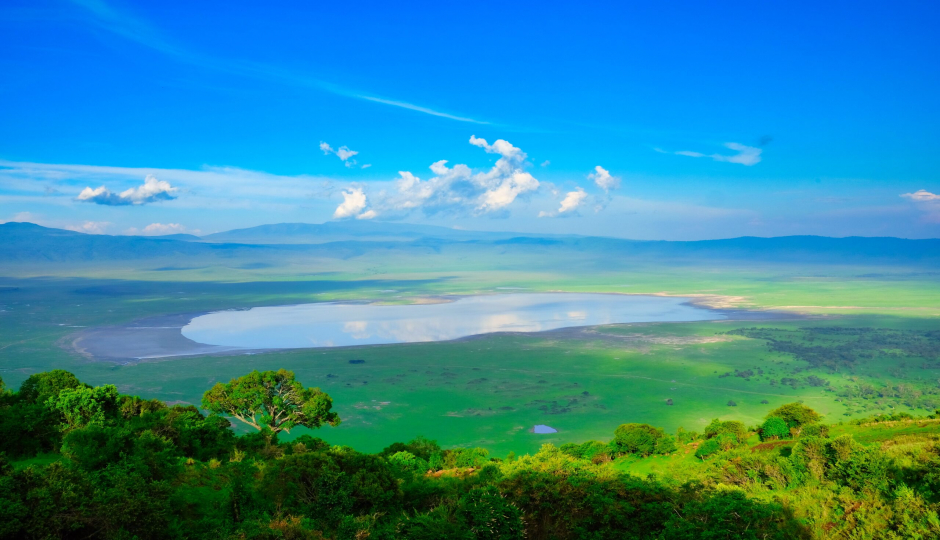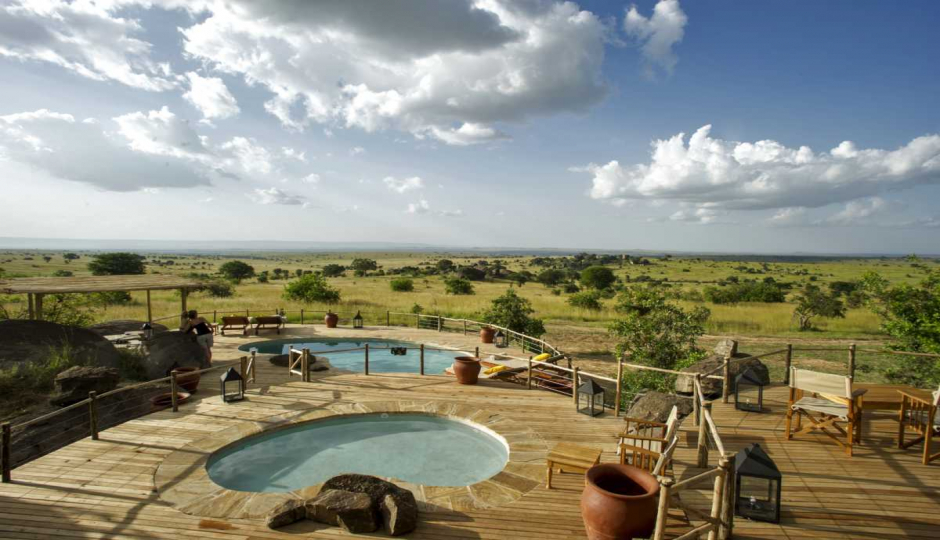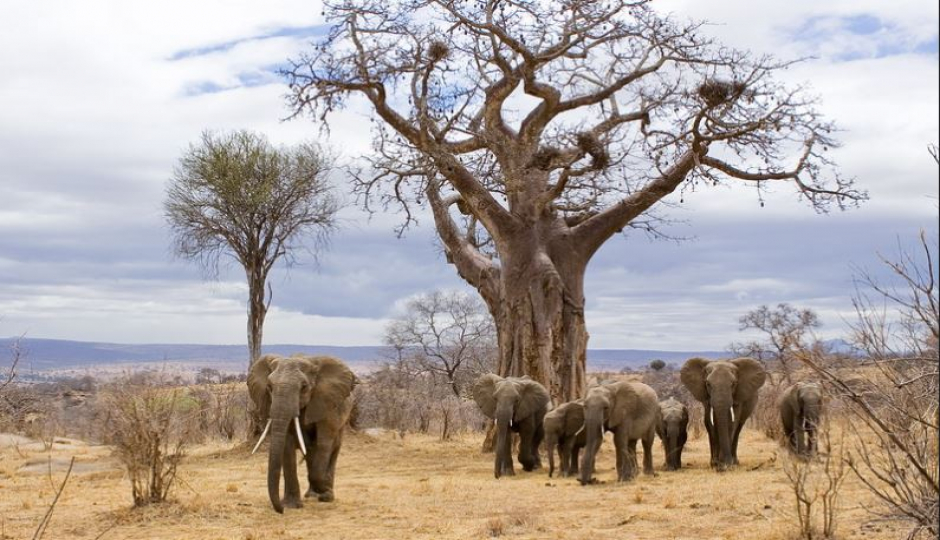







Tourists come from around the world to see the wildebeest migration in Serengeti National Parl. The people call it the “Great Migration.” This is because of the thousands of wildebeests that leave their home in the Serengeti National Park to migrate toward the Maasai Mara in Kenya to take advantage of seasonal waterholes. They move towards Ololossitso (lion’s hole), where they find lots of water and grasses during dry seasons. The wildebeest come here to drink, eat grass and graze on them until they are full enough to return home or find another area with more waterholes. The migration happens every year from May to July.
2. Diverse Culture
Tanzania is a country with many cultures. These cultures are represented by the ethnic groups that inhabit the land. For instance, the Maasai are a group of people living in the northern part of Tanzania and are pastoralists. They practice cattle-herding and use their cattle as their primary source of income. The Maasai language is also unique because it has no written form or alphabet, although most of its words are translated into English or Swahili. Visit the Maasai Cultural Village in Arusha, and you will see how the Maasai live their lives.
3. Sandy Beaches
Zanzibar is the largest island in the Indian Ocean and lies off the coast of Tanzania and Mozambique. It has about 1.7 million people, with most living in the island capital, Stone Town. Coral reef dunes and beaches mostly form the island. The west coast is sandy, while the east coast is rocky. During low tide, it becomes possible to walk across rocks to reach the other side of Zanzibar Island, but during high tide, it is not possible to do so without getting wet feet or getting stuck on rocks. The white sand beaches and seawater are ideal for swimming, snorkeling, kayaking, and scuba diving.
4. The Great Rift Valley
The Great Rift Valley is a long, deep, and long valley that goes from the coast of Lake Victoria to the shore of Lake Tanganyika. It is part of the East African Rift System, the longest continental rift globally. It is one of Tanzania’s most important natural resources because it contains gold, copper, uranium, mica, and other minerals. The Rift Valley also serves as a mountain range formed due to movement in tectonic plates. The scenic beauty of the Rift Valley has made it a global tourist destination.
5. Historical Sites
Archaeologists have discovered stone tools, pottery, and other artifacts in the region that date back to the Stone Age, about 2.5 million years ago. The stone tools and pottery were found in Olduvai Gorge. These artifacts prove that humans inhabited this part of Tanzania for a long time. Volcanic eruptions formed the lake, and the area was once covered by water, making it an excellent place for people to settle down. Archaeologists have also discovered other artifacts in Sumbawanga and Songea, including beads, stone tools, and polished stones with markings that are believed to be used by early people to track animals or count days or years.
6. The Northern Highlands
The Northern Highlands are located in the north of Tanzania, along the border with Kenya. The highlands are covered by grassland and savannahs, one of Tanzania's most important natural resources. These areas are rich in wildlife, including elephants, lions, and leopards. It is also home to many bird species, including the white-backed vulture, the black-necked crane, and the African fish eagle.
7. Mount Kilimanjaro
Mount Kilimanjaro is the highest mountain in Africa. It is also one of the most beautiful mountains and is located in the northern part of Tanzania. The mountain can be seen from many parts of the country and has a unique shape. The mountain has a crater lake on its summit filled with snow every winter. The easiest way of getting to the summit is by walking. The paths are well-marked, and there is a wall that people can climb up to reach the crater lake. You will find fantastic camping sites in the mountain, and there are many people who go there to stay for days. There are guides available who take visitors to the summit and can stay in a cabin near the top of the mountain.
8. National Parks And Game Reserves
The breathtaking scenery of Tanzania’s national parks and game reserves is enough to give you goosebumps. There are amazing national parks and game reserves to maintain a balance between the environment and humans. Some of these national parks and game reserves are Serengeti National Park, Ngorongoro Conservation Area, Tarangire National Park, Arusha National Park, and Lake Manyara National Park. The Serengeti National Park is the biggest national park in the country, with over 14,760 square kilometers. It is home to the famous Big Five. These are lions, leopards, elephants, and rhinos. The Ngorongoro Conservation Area is located in the north of Tanzania and contains one of the most famous crater lakes in Africa called Lake Magadi.
9. The Biggest Lake In Africa
Lake Victoria is the biggest lake in Africa, and it is also one of the largest lakes in the world. The lake is more than 1,000 kilometers long and covers an area of 37,000 square kilometers. The lake has a mean depth of 43 meters and a maximum of 164 meters. It has a maximum elevation of 1,914 meters above sea level. Lake Victoria is fed by the Nile River and several rivers from Mount Kilimanjaro. It drains through the Kagera River into Tanzania’s Lake Nyasa before emptying into the Indian Ocean. You can take a cruise and see the islands scattered in the lake.
The beauty of Tanzania’s national parks and game reserves is enough to keep the eyes glued to the scenery. Africa has so much to offer, and Tanzania is one of the countries you should go to. You can do unique activities in Tanzania like hiking, trekking, bird watching, game hunting, and fishing. All these activities will allow you to discover Africa's beauty.




How Do I Plan a Kilimanjaro Climb?
How Much Does a Tanzania Safari Trip Cost?
Is It Worth Going on a 1-Day Tanzania Safari?
To book your adventure, simply send us an email detailing your desired experience—whether it's climbing Mount Kilimanjaro, going on a Tanzania safari, or enjoying the Zanzibar beach.
We'll promptly respond with all the information you need to finalize your plans. Plus, we offer the convenience of online payment to make the process even smoother.
View Packages